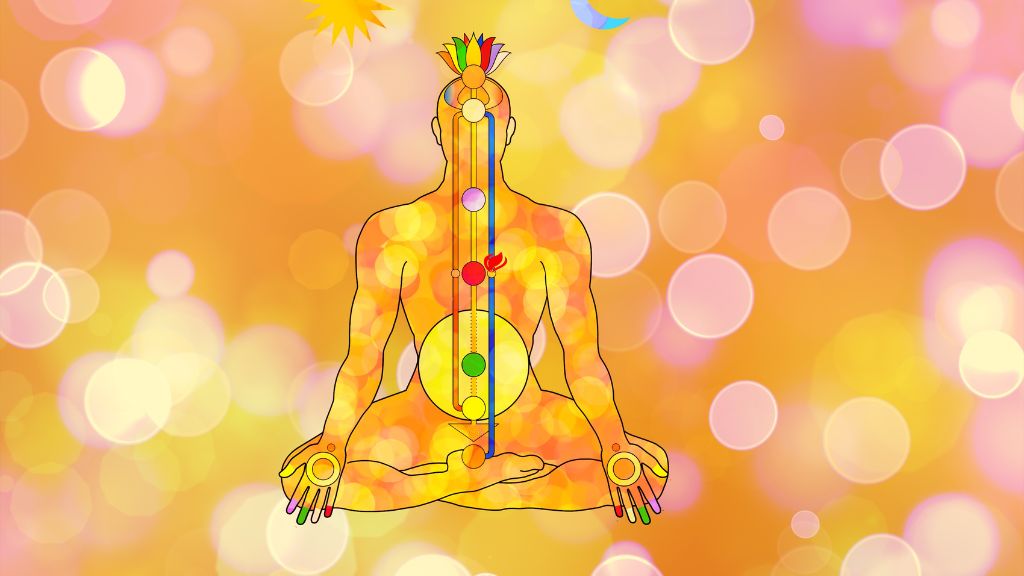
In the hustle and bustle of daily life, we often neglect our thoughts and emotions. Our mental
chatter goes unchecked, and feelings pass by without acknowledgment or understanding.
But if we take a moment to go deeper, ask ourselves the right questions, and listen to the
"unheard symphonies" within us, we will find the answers we seek.
At the core of this exploration lies the ancient wisdom of chakras—energy vortexes within
the body that influence our physical, emotional, and spiritual well-being. Understanding and
balancing these chakras can unlock a harmonious life filled with peace, clarity, and health.
Energy Vortexes: Chakras and Their Significance
Chakras are the unseen energy centers in our body, each governing different aspects of our
well-being. When our chakras are balanced and aligned, energy flows freely, promoting
health and vitality. However, imbalances can manifest as physical ailments, emotional
disturbances, or mental blockages.
The seven primary chakras are:
- Root Chakra (Muladhara): Located at the base of the spine, it governs our sense of security and stability.
- Sacral Chakra (Svadhisthana): Found just below the navel, it influences creativity, pleasure, and emotional balance.
- Solar Plexus Chakra (Manipura): Located in the upper abdomen, it is the seat of personal power and self-confidence.
- Heart Chakra (Anahata): Situated at the center of the chest, it governs love, compassion, and emotional connections.
- Throat Chakra (Vishuddha): Found at the throat, it is associated with communication and self-expression.
- Third Eye Chakra (Ajna): Located between the eyebrows, it governs intuition andinner wisdom.
- Crown Chakra (Sahasrara): Positioned at the top of the head, it connects us to spiritual awareness and higher consciousness.
By understanding and tuning into these energy centers, we can achieve a state of inner
harmony and balance.
Becoming an Observer: The Key to Emotional Mastery
One of the most transformative practices for balancing our chakras and energies is adopting
the role of the "Observer." This involves witnessing our thoughts and emotions without
judgment.
Shifting from Anxiety to Understanding
When we become observers, we move from a state of reactive anxiety to one of
compassionate understanding. Many spiritual teachings across cultures emphasize this
practice, but it often feels elusive. However, with a simple and practical approach, we can
integrate it into our daily lives.
Applied Methodology: The Art of Reporting
The process begins with "reporting." This means acknowledging your feelings without
judgment. If you feel low, jealous, upset, or angry, simply note it without labeling yourself as
a bad person. These emotions are natural and common to everyone.
Once you acknowledge the feeling, ask yourself:
- Why am I feeling this way?
- What is the root cause of this emotion?
Avoid judging the answers. Simply take note of them as information—like an observer
collecting data. Over time, this practice creates a subtle but powerful shift in your being. You
will find that emotional triggers lose their power, and you remain more centered and
balanced.
The Ripple Effect: Transforming Your Environment
As you cultivate the Observer mindset, a beautiful transformation occurs. The energy of
people around you begins to shift. They become more peaceful in your presence, and a
natural harmony develops in your relationships.
This ripple effect brings others into your peace rather than allowing their turbulence to drain
you. By staying aligned and balanced, you become a beacon of calm, inspiring others to
seek that same balance.
Anahat Chakra Analysis: The Best Way to Balance Energies
Anahat Chakra analysis offers a holistic way to understand and address imbalances in your
life. By assessing the state of your chakras, you can identify where energy is blocked or
overactive. Techniques such as meditation, crystal healing, sound therapy, and breathwork
can help restore balance.
Each chakra corresponds to specific physical and emotional patterns. For example:
- If you struggle with insecurity, focus on grounding practices to balance the Root Chakra.
- If communication is an issue, throat-opening exercises can help harmonize the
Throat Chakra.
By integrating chakra analysis with the practice of being an Observer, you create a powerful
synergy that promotes lasting well-being.
Conclusion: Hear the Unheard Symphony
Life is a beautiful composition, waiting for us to tune in and hear its melodies. By observing
our thoughts, balancing our chakras, and embracing our emotions without judgment, we can
create a harmonious existence.
Remember, the key to a healthy body and mind lies in understanding the symphony within.
It’s time to hear those unheard symphonies, tune into your energy centers, and live a life of
balance, joy, and peace.